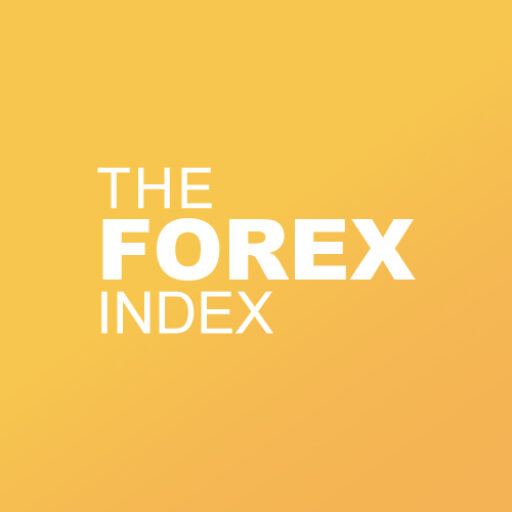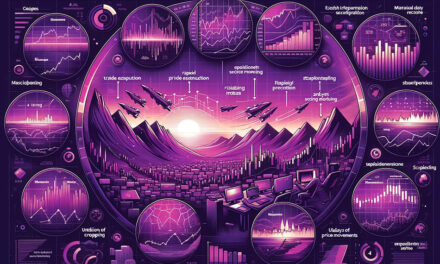Are you interested in delving into the world of forex trading? If so, then understanding the ins and outs of quantitative analysis can significantly enhance your trading strategies. In this article, we will explore the basics of quantitative analysis and how it can benefit forex traders. We will also dive into various techniques used to analyze market trends, measure volatility, and make automated trading decisions. Additionally, we’ll touch on the effectiveness of algorithmic trading strategies. So, let’s embark on this fascinating journey and uncover the science behind forex trading with quantitative analysis!
Understanding the Basics of Quantitative Analysis
Before we dive into the exciting world of forex trading and quantitative analysis, it’s essential to have a solid understanding of the basics. Quantitative analysis in forex involves using mathematical and statistical models to analyze market data and make informed trading decisions. By utilizing robust frameworks, forex traders can identify trends, patterns, and potential trading opportunities.
One critical aspect of quantitative analysis is the use of historical data to predict future market movements. By thoroughly analyzing past trends and patterns, traders can gain valuable insights into potential market behavior. This data-driven approach enables traders to make informed decisions that rely less on emotions and more on concrete evidence.
When it comes to quantitative analysis, there are various mathematical and statistical models that traders can employ. One popular model is the moving average, which calculates the average price of a currency pair over a specific period. This model helps traders identify trends by smoothing out short-term price fluctuations.
Another commonly used model is the relative strength index (RSI), which measures the speed and change of price movements. Traders often use this model to determine whether a currency pair is overbought or oversold, indicating potential reversal points in the market.
In addition to these models, traders also utilize regression analysis to identify the relationship between different variables and their impact on currency prices. By analyzing historical data, traders can uncover correlations and make predictions based on these relationships.
Furthermore, quantitative analysis involves the use of statistical indicators such as standard deviation, volatility, and correlation coefficients. These indicators provide valuable insights into market conditions, helping traders assess risk and make informed decisions.
It’s important to note that while quantitative analysis is a powerful tool, it should not be the sole basis for trading decisions. Traders should also consider fundamental analysis, which involves evaluating economic indicators, geopolitical events, and market sentiment. By combining both quantitative and fundamental analysis, traders can develop a comprehensive trading strategy.
In conclusion, quantitative analysis plays a crucial role in forex trading by providing traders with valuable insights into market trends and potential trading opportunities. By using mathematical and statistical models, traders can make informed decisions based on historical data and statistical indicators. However, it’s important to remember that quantitative analysis should be complemented with fundamental analysis to develop a well-rounded trading strategy.
How Quantitative Analysis Helps Forex Traders
Quantitative analysis has become an indispensable tool for forex traders due to the numerous benefits it offers. Firstly, it allows traders to gain a deeper understanding of market dynamics, enabling them to identify profitable trading opportunities. By analyzing historical data, traders can uncover patterns and trends that may not be immediately apparent to the naked eye.
Furthermore, quantitative analysis assists traders in managing risks effectively. By employing mathematical models, traders can measure volatility and predict potential downside risks. This enables them to implement appropriate risk management strategies, such as position sizing and stop-loss orders, to protect their capital.
Analyzing Market Trends with Quantitative Analysis
One of the most powerful applications of quantitative analysis in forex trading is the ability to analyze market trends accurately. By using statistical techniques and mathematical models, traders can identify trends and predict future price movements. This enables them to enter trades at the optimal time and maximize their profit potential.
Additionally, quantitative analysis allows traders to validate their trading strategies by backtesting them against historical data. This process involves applying trading rules to past market conditions to see how the strategy would have performed. By conducting rigorous backtesting, traders can gain confidence in their strategies and fine-tune them for optimal performance.
Exploring the Benefits of Quantitative Analysis
Quantitative analysis offers several benefits that can greatly enhance forex trading strategies. Firstly, it provides traders with a systematic and disciplined approach to trading. By relying on concrete data and statistical models, traders can avoid impulsive and emotion-driven decision-making.
Secondly, quantitative analysis enables traders to identify and exploit market inefficiencies. By identifying patterns and trends in market data, traders can find opportunities where prices may diverge from their fundamental value. This allows traders to potentially profit from these discrepancies.
Applying Mathematical Models to Forex Trading
The application of mathematical models is a key aspect of quantitative analysis in forex trading. Various models, such as moving averages, exponential smoothing, and regression analysis, can be used to analyze price movements and predict future trends.
Moving averages, for example, are used to smooth out short-term price fluctuations and identify the overall trend. Traders can use different time frames of moving averages to gain insights into short-term and long-term trends.
Regression analysis, on the other hand, allows traders to quantify the relationship between different variables, such as economic indicators and currency exchange rates. By analyzing these relationships, traders can make more informed trading decisions based on fundamental factors.
Leveraging Big Data to Generate Trading Signals
In today’s digital era, vast amounts of data are generated every second. With the advent of big data technology, traders can now leverage this wealth of information to generate valuable trading signals. By analyzing large datasets using sophisticated algorithms, traders can uncover hidden patterns and relationships that can lead to profitable trading strategies.
For example, sentiment analysis techniques can analyze social media posts, news articles, and other textual data to gauge market sentiment. This information can then be used to generate trading signals based on crowd behavior and market sentiment.
Measuring Volatility with Quantitative Analysis
Volatility is an essential factor to consider in forex trading, as it can greatly influence price movements and trading strategies. Quantitative analysis provides traders with various metrics and models to measure volatility effectively.
One commonly used metric is the standard deviation, which measures how much a currency pair’s price has varied from its average over a specific period. Additionally, measures such as the Bollinger Bands and Average True Range (ATR) can provide traders with insights into the potential range of price movements.
Automating Trading Decisions with Quantitative Analysis
Advancements in technology have made it possible for traders to automate their trading decisions using quantitative analysis. Automated trading systems, also known as algorithmic trading, rely on pre-programmed rules to execute trades automatically based on market conditions and quantitative analysis.
These systems can process vast amounts of data in real-time, allowing for quick execution of trades and the ability to capitalize on fleeting opportunities. By removing emotions from the trading equation, automated trading systems can help traders stick to their strategies and avoid impulsive decisions.
Using Machine Learning to Enhance Quantitative Analysis
Machine learning, a subset of artificial intelligence, has gained significant popularity in the financial industry. By using algorithms that can learn from data, machine learning can enhance quantitative analysis by identifying complex patterns and relationships that might be difficult to detect using traditional statistical techniques.
Machine learning algorithms can analyze large datasets and adapt to changing market conditions, allowing traders to refine their strategies in real-time. Additionally, machine learning can help traders identify non-linear relationships and make more accurate predictions based on historical data.
Are Algorithmic Trading Strategies Effective?
The effectiveness of algorithmic trading strategies depends on various factors, including the robustness of the strategy, the quality of the data used, and the market conditions. While algorithmic trading can provide significant advantages in terms of speed and efficiency, it is not a guarantee of success.
Successful algorithmic trading requires continuous monitoring and refinement of trading strategies to adapt to changing market conditions. Additionally, risk management is crucial to mitigate potential losses associated with automated trading.
In conclusion, quantitative analysis plays a crucial role in forex trading, providing traders with valuable insights and tools to make informed decisions. By understanding the basics of quantitative analysis, traders can enhance their trading strategies, analyze market trends, measure volatility, automate trading decisions, and leverage machine learning techniques. While algorithmic trading can be effective, it requires careful consideration and continuous refinement to navigate the dynamic forex market successfully.






